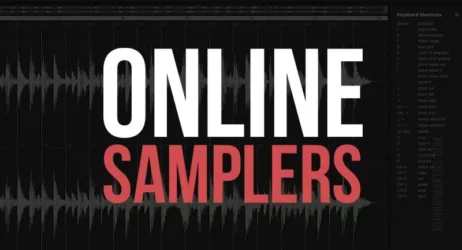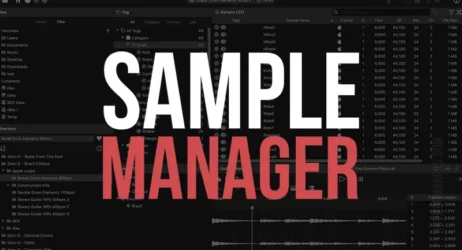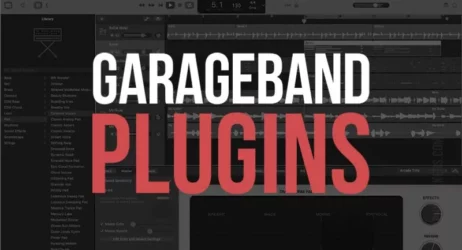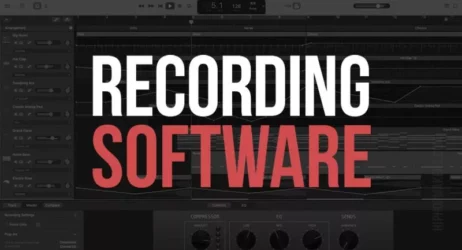This simple guide will answer what is EQ in music, the different types of equalizers, and how they work. Learn all about audio equalization to improve your music.
What Is EQ In Music?
An EQ, also called an Equalizer, is an audio tool used to adjust the frequency or the range of frequencies within a sound. It helps remove the unwanted frequencies, boost other frequencies, and helps in balancing out all the sounds so that they fit well in the mix.
- What is EQ in Music
- What is Audio Equalization
- What Are the Types of Equalizers
- How Does An Equalizer Work
- How to Use An Equalizer
- What is An EQ Chart
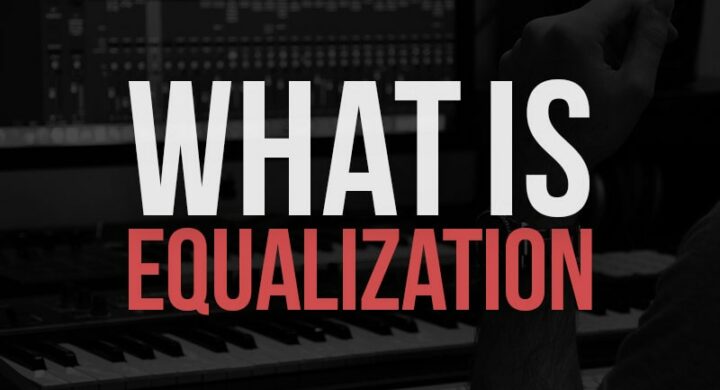
What is EQ in Music?
An equalizer is a very commonly used audio processor/audio filter. Equalizers are found in home stereo systems, car stereo systems, instrumental amplifiers, studio mixing boards, and music production software.
To understand equalizers, it is necessary first to have a basic understanding of frequency.
Frequency means the number of cycles of the sound wave per second. It tells us about the speed of the vibration, and it determines the pitch of the sound.
Equalizers are the sound processors that help in boosting or cutting specific frequency ranges to make them either louder or quieter.
Equalizers can adjust both treble and bass frequencies in music, instruments, and voice recordings.
Related: 40 Best Free Equalizer VST Plugins
What is Audio Equalization?
Audio equalization or simply equalization is the process by which we can bring up or down the amplitude of specific sound frequencies in relation to others and thus adjust the volume of different frequency bands within an audio signal. It is achieved by the equipment known as the Equalizer.
What Are the Types of Equalizers?
There are various Equalizers, each having different functions and purposes. As per icon collective, here are some of the types of equalizers used in music production:
#1. Parametric EQ
These types of equalizers are the most common in music production. They offer fully configurable and adjustable frequency bands. Parametric equalizers are very accurate in removing harsh, unpleasant, and masking frequencies.
The parametric equalizers also come in two types, the digital and the analog. The digital ones provide more modern features, while the analog model equalizers are more basic and provide fewer bands or features.
#2. Semi-parametric EQ
These equalizers can be thought of as parametric equalizers but without one or more than one feature. In this type of equalizer, one can only adjust the frequency and gain of each band.
#3. Dynamic EQ
These equalizers combine the precision of parametric equalizers along with the dynamic control of compression and expansion. This kind of combination helps in shaping as well as enhancing the sounds.
#4. Graphic EQ
In Graphic EQ, using the evenly placed slider controls helps boost or attenuate a range of fixed frequencies. They can have 31 or more bands, and it is essential to note that having more bands provides higher accuracy over the frequency spectrum.

Those graphic equalizers with narrow bandwidths have greater precision, but they are not as effective as the parametric EQ for surgical work.
It is also important to note that there is no control over each band’s filter shape and bandwidth. Graphic equalizers are used to make broad changes to the overall mix.
#5. Shelving EQ
These are the most basic type of equalizers that help in boosting or attenuating frequencies above or below a specific cut-off point.
How Does An Equalizer Work?
The human range of hearing is from 20Hz to 20,000Hz. There are specific points in these frequency ranges, such as the 20Hz, 300Hz, etc., which are referred to as the frequency points, EQ points, range, or bands, and the range of all the frequencies is known as the frequency spectrum.
So when the equalization process of a sound is done, we create the EQ points along the audio spectrum. These points change the sound by changing the level.
In short, equalizers work by changing the level of specific areas in the frequency spectrum. They are the devices that enable us to shape a sound by adjusting the gain of a sound at selected points.
How to Use An Equalizer
First of all, to use the Equalizer properly, one needs to understand the EQ’s frequency range and control points.
As a general rule, equalizers have the frequency range from 20Hz (on the left) to 20KHz (to the right). If the Equalizer is an analog EQ, then it is likely to be having the adjustment sliders. However, if it’s a digital EQ, there will be a series of equally spaced marked points along the horizontal line.
The sliders are controlled and are often set at certain specific frequency marks, and some models will allow the user to change these control point settings. While there are some other models in which the frequencies are likely to be permanently fixed.
So after you have got the proper understanding of the basics of frequency and how the Equalizer works, now it’s the time to start boosting up or cutting down the frequencies of a song.
If the EQ is an analog, you have to just push the slider in an upward direction, which will turn up the sound within that frequency range, and it is called boosting. On the other hand, if you slide down the slider, then it, as a result, turns down the sound, and it is called cutting.
If the EQ is of digital type, you need to just click on the control point and then drag it up for boosting or drag it down for cutting.
So these are just the basic things that can be done while using the EQ. Note that there can be many other features in your EQ, depending on its type.
For instance, the EQ can have the feature of using the low pass and high pass filters. A low pass filter allows all the frequencies below a certain point to pass through and blocks all the frequencies above that point, and a high pass filter does the opposite.
This low pass filter feature can be helpful for you if there’s a case where you might want to block all the frequencies above 10KHz.
What is An EQ Chart?
EQ charts basically break down the entire frequency spectrum and explain each frequency range and how it sounds using descriptive words.
The primary purpose of an EQ is used in balance the frequency spectrum. The EQ charts become helpful when we have to figure out where the sound is unbalanced.
Summary of EQ
EQs or Equalizers are tools used to adjust the volume of a frequency or range of frequencies within a sound. Removing the unwanted frequencies, boosting the other frequencies, and balancing out all the sounds to fit together help remove the unwanted frequencies.
I hope you found this information on EQ in music helpful.
If we missed anything, please share it in the comments.


